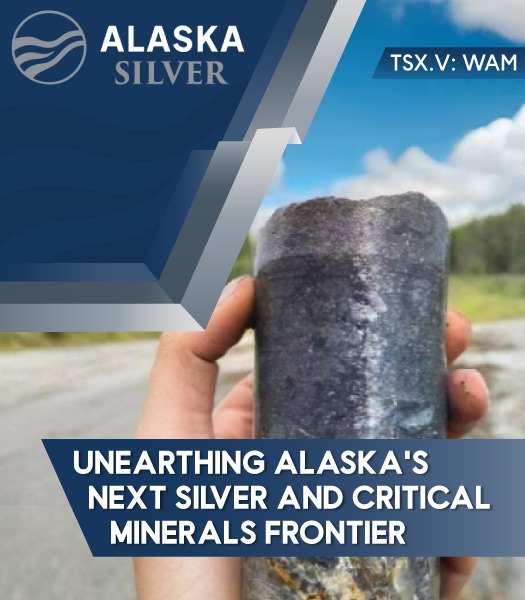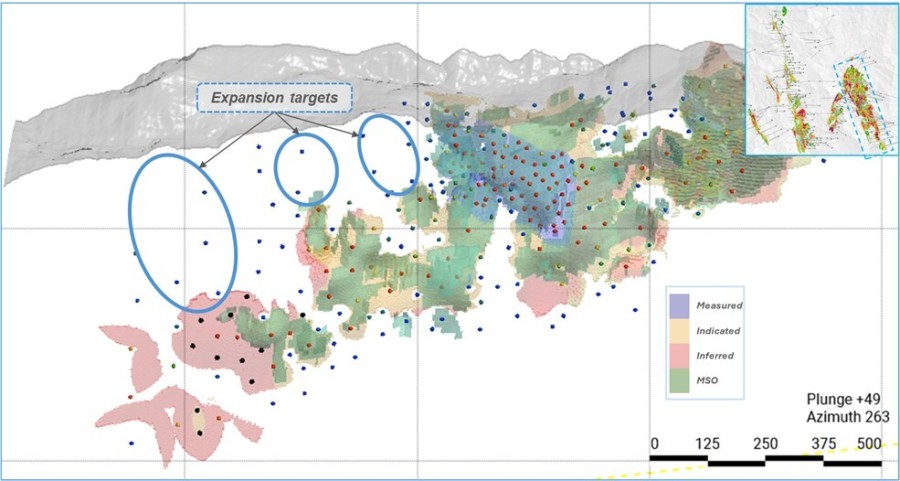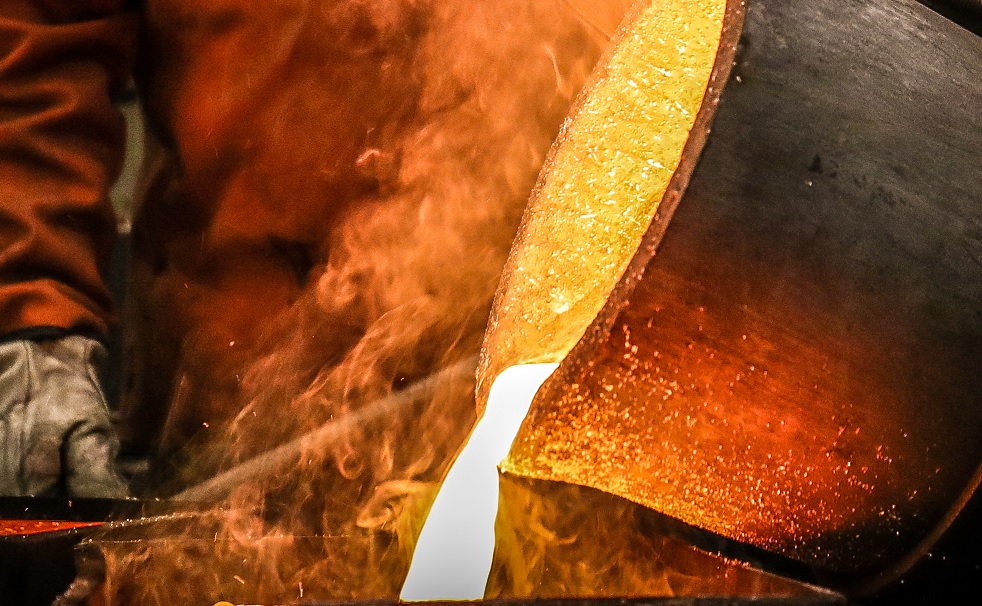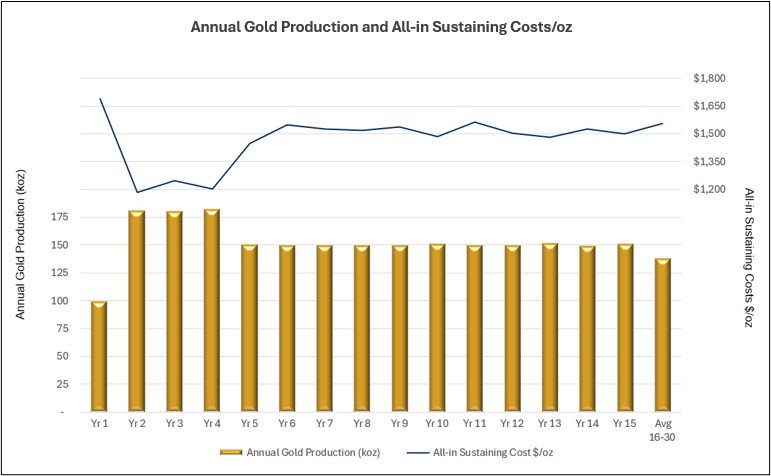TORONTO, ONTARIO--(Marketwired - May 3, 2017) - First Cobalt Corp. (TSX VENTURE:FCC) (the "Company") today announced its 2017 exploration program at the former producing Keeley-Frontier Mine, near Cobalt, Ontario. The $1 million program is fully funded and will commence this week. The program includes over 7,000 metres of surface drilling, including 5,000 metres at Keeley-Frontier and 2,000 metres of regional exploration drilling.
Program Highlights
- Fully funded program designed to understand the present-day cobalt potential in a historic mining camp
- Digital compilation of 50 years of historic mine data to generate a 3D geological model
- Detailed and property-scale structural mapping of mineralized veins and host rocks
- Bore-hole geophysics and televiewer imaging of drill holes from the 2012 drilling campaign targeting the Beaver Lake Fault west of the former mine
- Systematic surface sampling at known prospects and occurrences throughout the property for assay analyses
- Detailed magnetic survey of the property totaling 35 square kilometres
- 5,000 metres of diamond drilling within the footprint of the Keeley-Frontier Mine testing targets from the 3D geological model
- 2,000 metres of regional exploration drilling to identify new mineralized fault systems
Trent Mell, President & Chief Executive Officer commented:
"The Keeley-Frontier Project is a cornerstone asset and this historic mine has not seen meaningful exploration activity in over 30 years. First Cobalt's objective is to be the first to unlock the present-day cobalt potential of this mining district with a systematic approach intended to realize the full extent of cobalt mineralization on the property and beyond. Like many of the North American gold mines developed during the last cycle, we believe that modern geoscience and mining methods have the potential to unlock value across the district. The Keeley-Frontier Project area is a key component to our strategy of delivering leveraged access to the cobalt market to meet growing global demand."
The Keeley-Frontier Mine
The neighbouring towns of Silver Centre and Cobalt, Ontario were historically the most prolific cobalt jurisdictions in Canada and the largest silver producers worldwide. It is estimated that these two mining camps produced 50 million pounds of cobalt and 600 million ounces of silver from 1904 to 1985 from 70 different mines. Nickel was also produced as a by-product. There has been minimal activity in both camps since 1993 other than some processing of ore from waste dumps and recovery of metals from tailings.
The Keeley and Frontier Mines were developed and operated as separate mines and later integrated in 1961. From 1908 to 1965, the Keeley-Frontier Mine produced a total of over 3.3 million pounds of cobalt at a recovered grade of 0.5% and 19.1 million ounces of silver at a recovered grade of 58 ounces per tonne. Most of the production occurred between 1922 and 1931 (Source: W.H. McIlwaine, 1970).
Figure 1. Bedrock geology and extent of Ag-Co veins in the Keeley-Frontier project area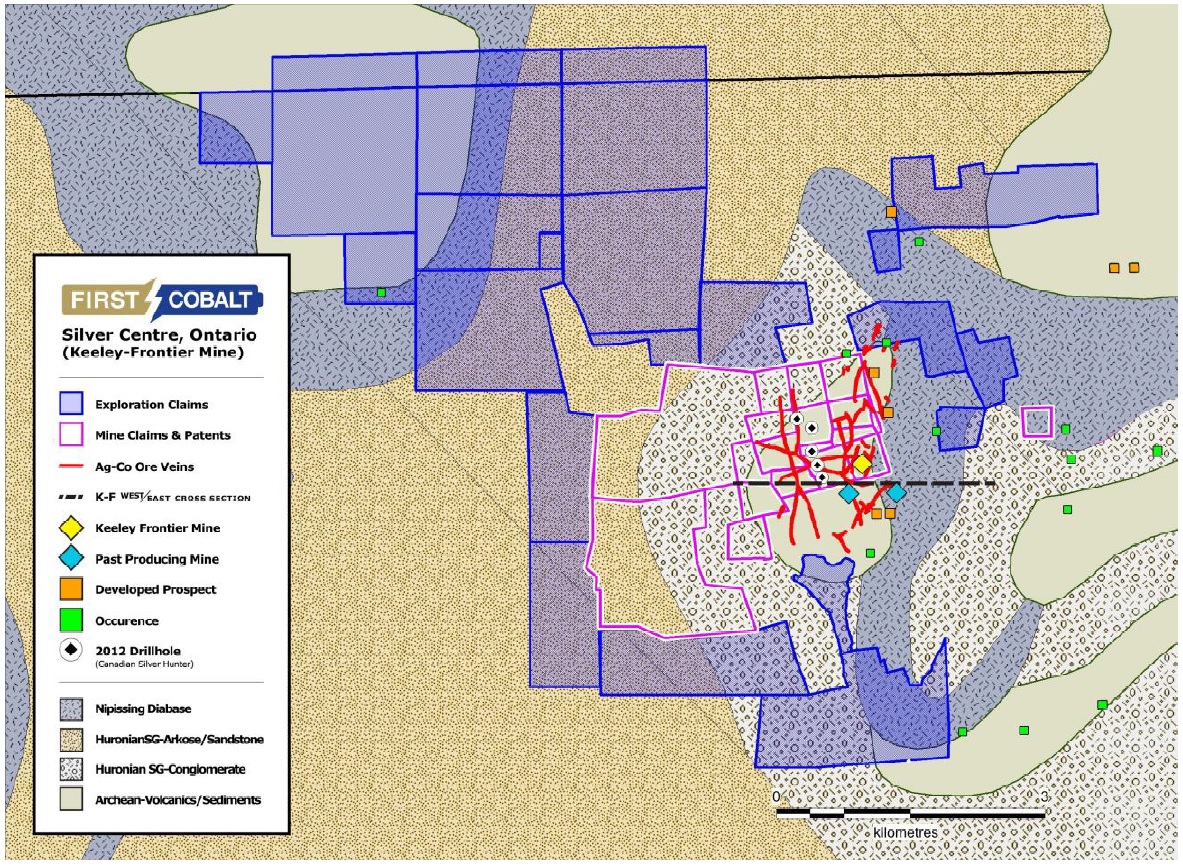
The mines have extensive underground workings, including ten shafts and several winzes extending to a depth from surface of 465 metres. Historic development at the Keeley Mine originated from the No. 3 Shaft in the southern portion of the silver-cobalt mineralized vein system, while the Frontier Mine focused primarily on the Wood's Vein to the north of Keeley infrastructure (see Figure 1). A winze was sunk within the Keeley Mine to access the western portion of the vein system to depth of over 240 metres (see Figure 2).
Figure 2. Reproduction of the schematic section showing interpreted geology and mine workings from archived data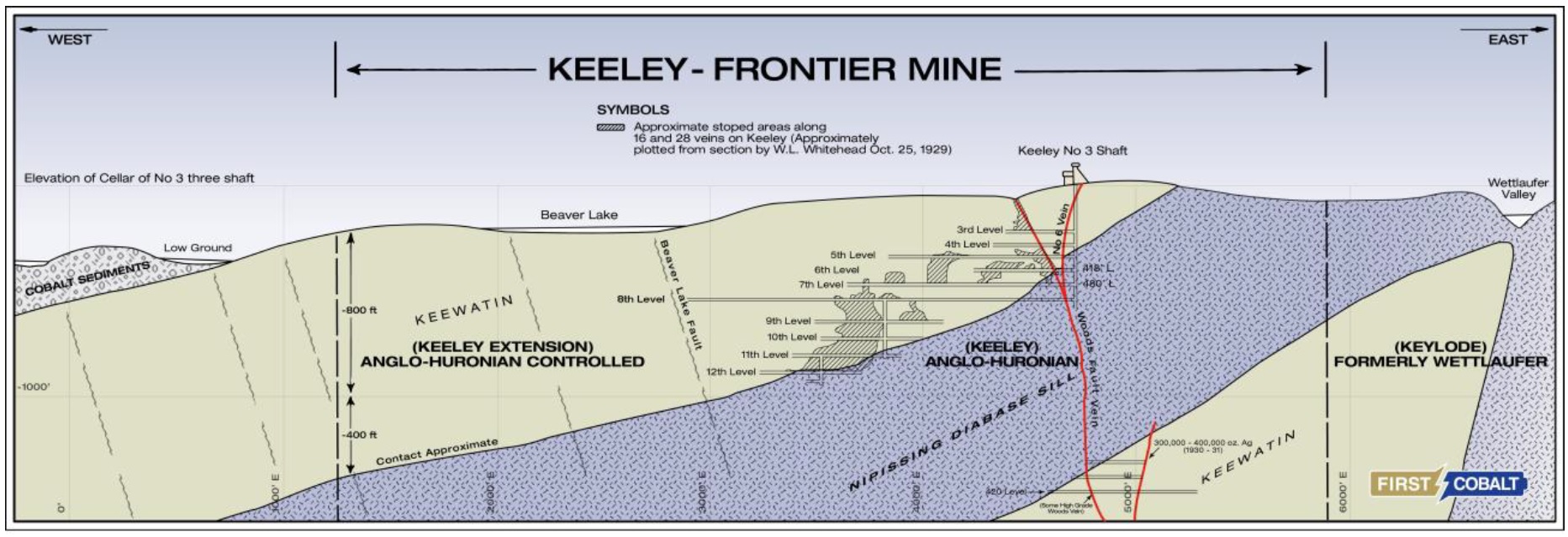
Under the terms of an option agreement with Canadian Silver Hunter announced March 16, 2017, First Cobalt may earn up to a 100% interest in Keeley-Frontier by making payments totaling $1.8 million (of which $350,000 has been paid) and spending $3 million on work programs over a three-year period.
Geologic Setting
The Silver Centre and Cobalt mining camps occur within the Cobalt Embayment consisting of Proterozoic sedimentary rocks unconformably overlain on Archean metavolcanic and metasedimentary rocks that have been intruded by the Nipissing diabase sills, dated at approximately 2.22 billion years. The Proterozoic sedimentary rocks are largely sequences of sandstone, arkose and conglomerate with minor dolomitic units collectively known as the Huronian Supergroup.
Mineralization occurs as Ag-Co-Ni-Bi-arsenides predominantly hosted in veins and stockworks known as Five-Element Vein Type deposits. Veins and stockworks are concentrated within and near the contacts of Nipissing diabase dykes with Huronian Supergroup metasedimentary rocks as well as Archean metavolcanic rocks. Metal variations within the individual deposits have not been documented.
The genesis of mineralization is somewhat contentious, but the unconformity is generally considered to be a conduit for hydrothermal fluids at an early stage of mineralization and the Nipissing sills may have provided the heat to drive fluid flow. As a result, mapping the subsurface architecture of the unconformity in proximity to the Nipissing diabase will potentially reveal new structural traps for vein development.
2017 Exploration Program
The 2017 program is intended to provide a better understanding of the extent of cobalt mineralization within the historic Keeley-Frontier Mine as well as explore known silver-cobalt prospects on the property. Systematic compilation and development of a 3D model, based on about 50 years of data on the Silver Centre mining camp, focused on the western side of the camp has begun. This model will be invaluable to understanding structure and opportunities for new discoveries.
Historic assays indicate cobalt-rich veins were encountered during mining but not followed up or exploited, as silver was the main focus. These areas will be specifically targeted for drilling during this program. Grab samples from Keeley-Frontier ore dumps collected in 2016 returned high grade values of >100 ounces per tonne of silver, >0.2% cobalt and anomalous nickel values (>0.1%). Ratios of silver to cobalt in the sample set are variable and more samples will be collected in 2017 to understand the distribution of these metals.
Initial field work will include mapping, prospecting, assaying, geophysics and downhole geophysics with televiewer imaging. This initial work is expected to provide many insights on the prospects for this deposit that cannot be gleaned from historic records. The Company intends to gain an appreciation for the cobalt zonation within the mine and of the potential for disseminated mineralization, which could be amenable for bulk mining.
First Cobalt will conduct additional sampling and geochemical analysis of the remaining drill core during the current exploration program. All six holes will also be surveyed for resistivity, gamma ray spectrometry, and magnetic susceptibility to determine the potential for predicting vein distribution using geophysical methods throughout the property.
The Company will conduct a detailed airborne magnetic survey over the property prior to the end of field season to further improve the structural interpretation of the 3D geological model and potentially identify areas for the exploration drilling program planned for winter. Other silver-cobalt prospects and occurrences throughout the property will also be targeted for drilling if the new data is favourable.
First Cobalt has assembled a very large property package to facilitate an exploration program around the Keeley-Frontier Mine designed to leverage this historic knowledge through the re-evaluation of the silver-cobalt mineralized system. The Silver Centre mining camp was targeted for three main criteria:
- Keeley-Frontier had the best cobalt-to-silver ratio of all the major historic mines in the camp. Most significantly, silver was the primary economic metal for mine development, yet in 1931 the Frontier Mine is reported to have produced more than a half million pounds of cobalt. This suggests there may be other cobalt-rich areas that were not targeted or exploited during mining;
- First Cobalt assembled a much larger land package than would have been possible in the Cobalt Camp. The Keeley-Frontier Mine and First Cobalt's South Lorrain land package together consist of 2,100 hectares (21 square kilometres) of contiguous land. This will facilitate regional exploration for new cobalt discoveries near the Keely-Frontier asset; and
- The Silver Centre Camp had been largely forgotten for more than half a century despite its storied past, with only limited exploration since the 1980s. The opportunity to return to the area with the lens of new mining techniques and geoscience is thus particularly appealing.
Technical Information and Qualified Person
Grab samples from the Keeley-Frontier ore dumps were analysed at Activation Laboratories Ltd. in Ancaster, Ontario. The 2016 samples were prepared using an Aqua Regia digestion and analysed using an ICP/MS finish. Over-range silver samples (> 100 ppm) were analysed using an ICP-OES finish. No external QA/QC samples were submitted since the results are not intended for resource estimation and were collected to test metal variability within "ore". Dr. Frank Santaguida, P.Geo., Vice President, Exploration for First Cobalt is the Qualified Person as defined by National Instrument 43-101 who has reviewed and approved the contents of this news release.

